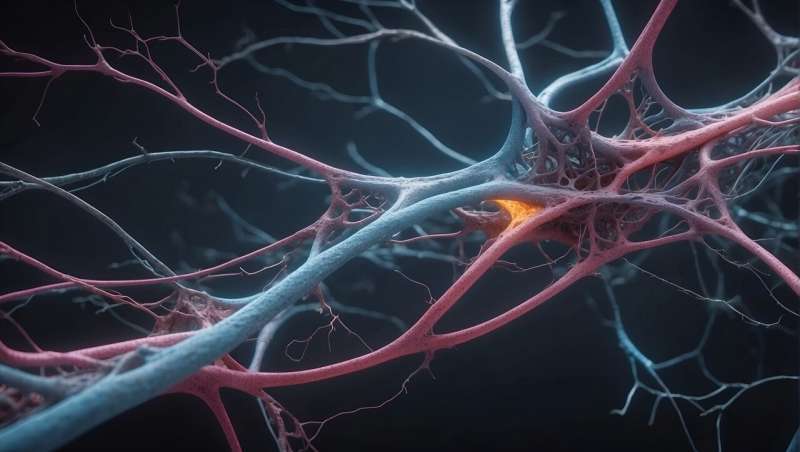Advanced Imaging Unveils Receptor Structures Key to Brain Repair

New cryo-electron microscopy research reveals the detailed structure of key cerebellar receptors, opening new avenues for therapies to repair brain function following injury or genetic mutations.
Recent advancements in cryo-electron microscopy have enabled scientists to visualize the detailed structure and shape of essential receptors in the cerebellum, a brain region behind the brainstem that is vital for coordinating movement, maintaining balance, and supporting cognitive functions. This breakthrough marks the first time such high-resolution imaging has been achieved for these neuronal connections.
The study, published in Nature, sheds light on how glutamate receptors—crucial for transmitting signals between neurons—are organized at synapses within the cerebellum. Understanding this molecular architecture offers promising pathways for developing therapies aimed at repairing these connections when they are damaged by injury or genetic mutations. Such disruptions are often linked to impairments in motor skills like sitting, standing, walking, and jumping, as well as learning and memory deficits.
Using Oregon Health & Science University's state-of-the-art cryo-electron microscopy facilities, researchers examined the structure of a specific type of glutamate receptor, revealing how these proteins cluster on synapses. Lead researcher Eric Gouaux emphasized the importance of receptor organization for proper neurotransmission, noting that precise placement is critical for neurons to accurately detect signals from neighboring cells.
This insight into the molecular details of synapses could lead to innovative drug development targeting these receptors to enhance or restore cerebellar function. Co-author Laurence Trussell highlighted the relevance of these findings, especially given the cerebellum's role in preventing disorders of balance and movement that result from injury or genetic issues.
The research emphasizes the potential of molecular-level understanding to pave the way for treatments that repair or replace damaged synapses, with implications not only for motor control but also for broader cognitive processes. The complete findings and methodology can be accessed in the published paper: Gating and noelin clustering of native Ca2+-permeable AMPA receptors, Nature (2025).
Stay Updated with Mia's Feed
Get the latest health & wellness insights delivered straight to your inbox.
Related Articles
Experts Advocate for Expanded Treatment of Hepatitis B to Save Lives
Experts call for expanding hepatitis B treatment guidelines to reduce global mortality, increase early intervention, and prevent liver cancer with safe, affordable medications.
Research Reveals That Infants Can Detect Pain Before Fully Understanding It
New research from UCL uncovers how infants develop the ability to sense pain before fully understanding it, emphasizing tailored neonatal care and pain management strategies.
Metabolism's Role in Breastfeeding’s Protective Effect Against Breast Cancer
Emerging research reveals that a woman’s metabolism, particularly mitochondrial function, influences how breastfeeding can reduce breast cancer risk. Personalized nutritional strategies may enhance protective effects and improve prevention efforts.
Global Estimates Highlight the Impact of Inadequate Type 1 Diabetes Care on Mortality and Population Loss
Recent research reveals that over 4 million lives could be saved in 2025 with better type 1 diabetes care, emphasizing urgent global health disparities and the need for improved access to treatment.



